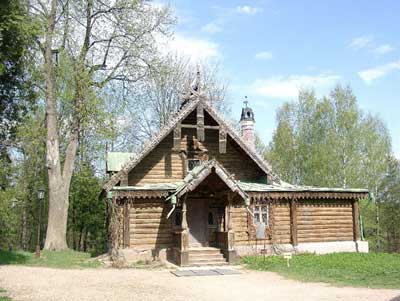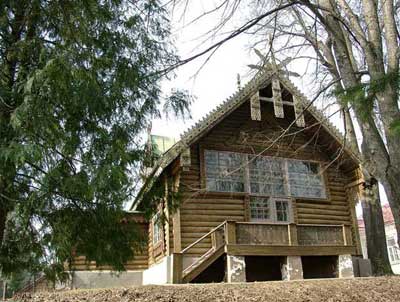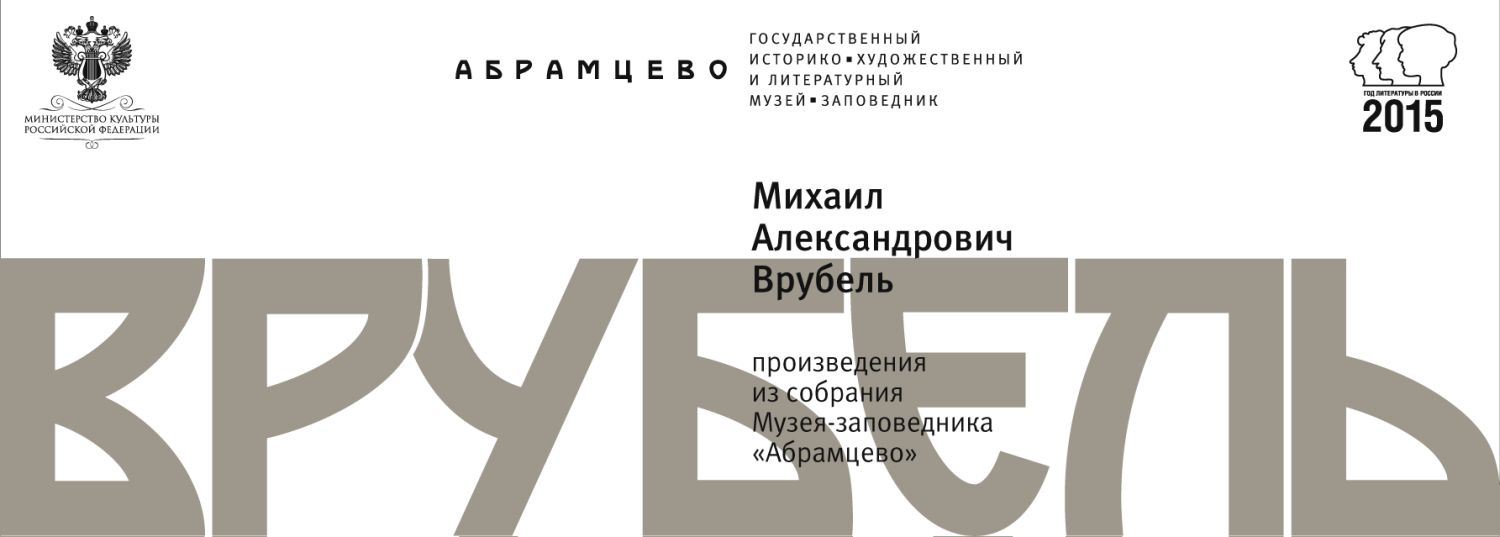STUDIOÂ
The Studio was constructed in 1873 under the project of Viktor Gartman (1834–1873) in place of an old Aksakov's cottage, to the south-east of the Manor House. The one-storey wooden building consists of an annex with a flat roof and the studio with a tent-roof for sculptural studies. The porch at the west side of the building leads to the small hall with the door to the living rooms to the right and the door to the studio in front. Natural lighting of the studio was carefully thought out: rectangular windows give light from the northern and southern parts and a wide window with a sash door leads into the balcony at the eastern side of the building. The Studio has no ceiling and the extra light comes from the roof dormers. The porch, the roof, the platbands of the windows and the eaves are richly decorated with wood carving. The Studio is the only building of Viktor Gartman that still exists. It is an example of the "Russian" or rather Pseudo Russian style, one of the trends of the architectural eclecticism characteristic for the second half of the 19th century. This trend was supported by Ivan Bogomolov, Viktor Gartman, Roman Kuzmin, Ivan Ropet and other famous architects, but views about their works were mixed. Vladimir Stasov, the art historian and critic wrote that "this is the most important, the most talented, the most diverse, the most amazing and the most elegant architecture among all our architectures. It has the real Russian spirit and has more of it than other architects could achieve before... There are real Russian architectural motifs; they are traditional, developed by people in their peasant houses, found on dishes, utensils and numerous household articles..." The architects of the "Russian" style used motives of folk art, but they joined them mechanically leaving apart their functional purpose. Thus, Gartman decorated the building with carved ornament taken from traditional embroideries. Savva Mamontov in "Chronicle of the place Abramtsevo" mentioned about the Studio with reserve: "The construction was not entirely good because Gartman, having done no drafts, could not come at site himself but entrusted his assistant Gromov with the work, the latter arrived from Moscow and built the house in accord with oral instructions of Gartman..." Viktor Vasnetsov in the letter to Vladimir Stasov wrote more openly: "Tell you frankly: the architecture of Gartman and Ropet seemed unsatisfactory for me".
In the Mamontovs' time the Studio witnessed the work of Mark Antokolsky, Viktor Vasnetsov, Ilya Repin, Savva Mamontov who was keen on sculpture while the living rooms in summer were occupied by Valentin Serov and Ilya Ostroukhov. In the 1920s there lived the artist Pyort Konchalovsky with his family. Â
View the embedded image gallery online at:
http://www.abramtsevo.net/eng/guidway/studio.html#sigProGalleria72691daaf3 Â Â Â Â Â Â Â Â
 Since June 2016 at the Studio of the Museum-Reserve “Abramtsevo” the permanent exhibition “Mikhail Vrubel. Majolica, graphics, ceramics. From the collection of the Abramtsevo Museum-Reserve” is opened. Mikhail Vrubel is one of the most outstanding figures of Russian art of the end of the 19th century – the beginning of the 20th century and for a long period of time he was connected with the Abramtsevo artistic circle. Exhibits are from the historical collection, belonged to Savva Mamontov, and from items of the Museum, collected in subsequent years. There are also the sketches to works on a monumental scale, such as paintings of St. Vladimir’s Cathedral in Kiev, portraits of the participants of the Abramtsevo artistic circle, painted by an artist during trips to Italy with Savva Mamontov, design sketches to setting of A.V. Morozov’s mansion, sketches of costumes and decorations to performances of the Russian Private Opera and others. The most remarkable exhibits are ceramic works, produced in Abramtsevo pottery. And, of course, you can see the most famous works by an artist, such as “Snow maiden”, “Egyptian”, decorative vases and various stove tiles. Many works of art presented at the exhibition are the sketches, but nevertheless they fully feature the art of Mikhail Vrubel and show almost all periods of his artistic way. Some part of them is exhibited in Russia for the first time.  Â
View the embedded image gallery online at:
http://www.abramtsevo.net/eng/guidway/studio.html#sigProGalleriafc608f36f3 |




